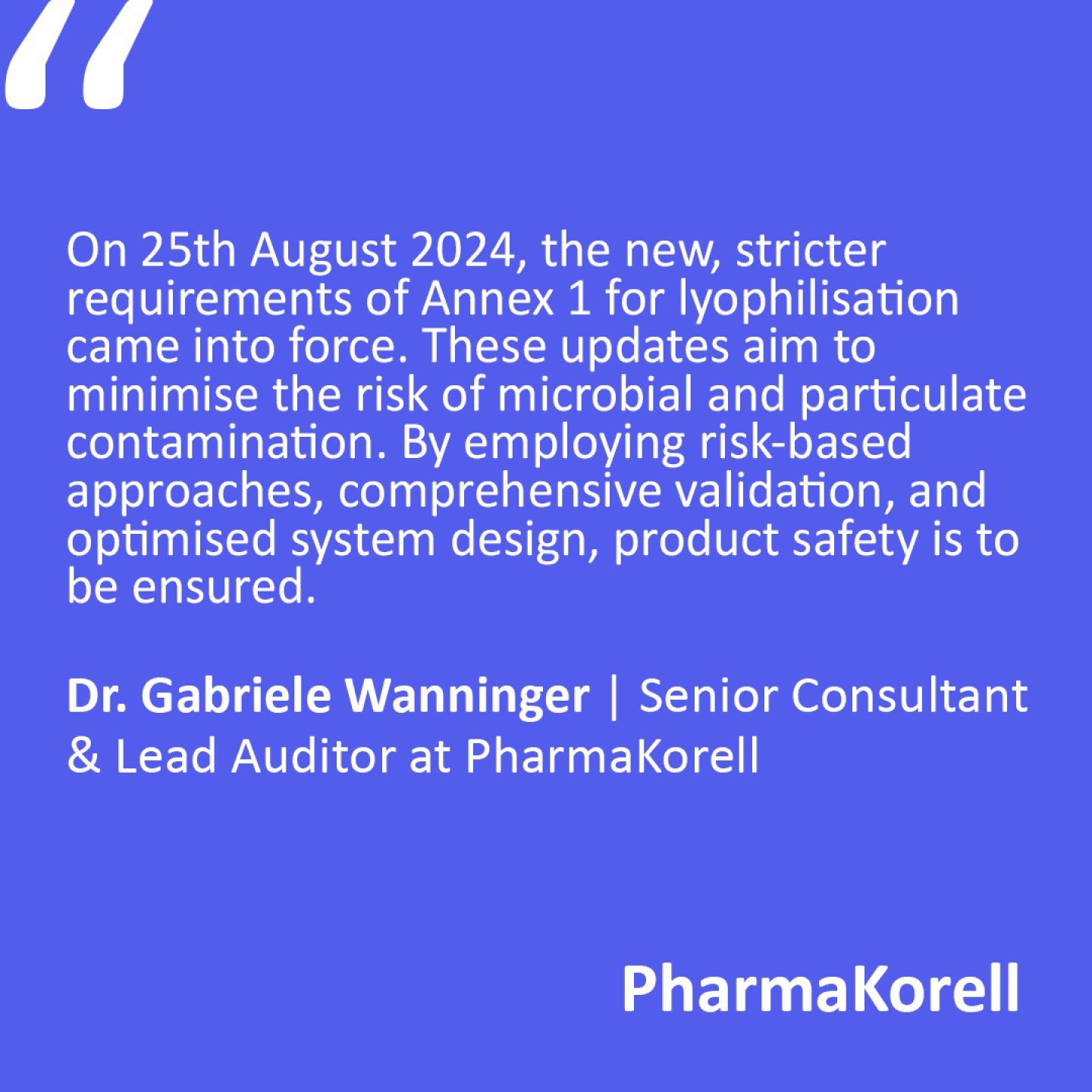On 25th August 2024, the new, stricter requirements of Annex 1 for lyophilisation came into force. These aim to minimise the risk of microbial and particulate contamination during the critical phase between the filling of containers for lyophilisation and the completion of the process.
These requirements aim to minimise the risk of microbial and particulate contamination during the sensitive phase between the filling of products for lyophilisation and the completion of the process.
The key points are summarised below:
System design and control The design of the entire lyophilisation system must be oriented towards minimising the risk of contamination. This includes the design of the transfer and loading/unloading areas, which should be configured to minimise personnel intervention. The underlying principle is that every interaction poses a potential risk of contamination.
Validation of sterilisation and hold times of the lyophiliser Sterilisation of the lyophiliser is a central aspect of ensuring product safety. The new requirements emphasise the need for thorough validation of the sterilisation process, including the determination of appropriate hold times. The validation must ensure that all parts of the lyophiliser that come into contact with the product are effectively sterilised and that sterility is maintained until the process is completed.
Risk-based frequency of sterilisation The frequency of lyophiliser sterilisation should be based on a risk assessment. This means that sterilisation should be carried out not only at fixed intervals but also with consideration of the specific risk factors associated with the production process. This risk-based approach allows for flexible sterilisation adapted to the actual needs.
Integrity of the lyophiliser The integrity of the lyophiliser must be ensured throughout the entire process. This includes maintaining a sterile state and preventing any leaks or other weaknesses that could lead to contamination. The integrity should be regularly verified and included as part of the validation process.
Airflow patterns Another critical element is the control of airflow in the areas where the lyophilisation process takes place. Airflow patterns should be designed to minimise the risk of contamination from particulate or microbiological sources. This also includes the monitoring and validation of airflow, particularly in the transfer and loading/unloading areas.
Loading/unloading The loading and unloading of the lyophiliser presents another potential source of contamination. Therefore, clear and validated patterns for loading the containers must be established. The transfer of partially closed containers, unloading of partially stoppered vials, and the use of sterile tools for these procedures must be strictly controlled. It is crucial that transfer systems ensure the required level of cleanliness to prevent contamination of partially closed containers.
Conclusion The new requirements of Annex 1 emphasise the need for comprehensive contamination protection during lyophilisation. Through careful system design, comprehensive validation, risk-based sterilisation frequency, ensuring system integrity, controlled airflow, and meticulously executed loading and unloading processes, product safety can be significantly enhanced. Every measure should align with the site's contamination control strategy (CCS) to ensure that all potential risks are minimised.
Contributed by Dr. Gabriele Wanninger, Senior Consultant and Lead Auditor at PharmaKorell.
Dr Wanninger is a licensed pharmacist and has worked for over 25 years in state pharmaceutical supervision as a GMP, GDP, and GCP inspector, and most recently for 16 years as the Head of the Inspectorate at the Government of Upper Bavaria. She has extensive experience in regulatory affairs related to pharmaceutical and medical device law, as well as in conducting third-country inspections on behalf of the EMA.
She was a member of several expert groups within the ZLG (Central Authority of the Laender for Health Protection) and contributed to international procedures of the European Commission. Additionally, Dr Wanninger has participated in several pharmaceutical projects with gtz/giz and PTB in Asia and Africa.
Since February 2023, Dr Wanninger has been working as a Senior Consultant and Lead Auditor at PharmaKorell.




